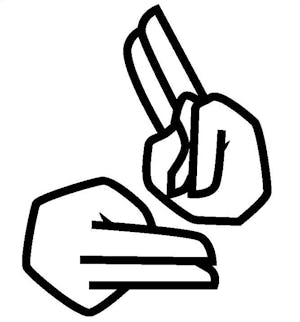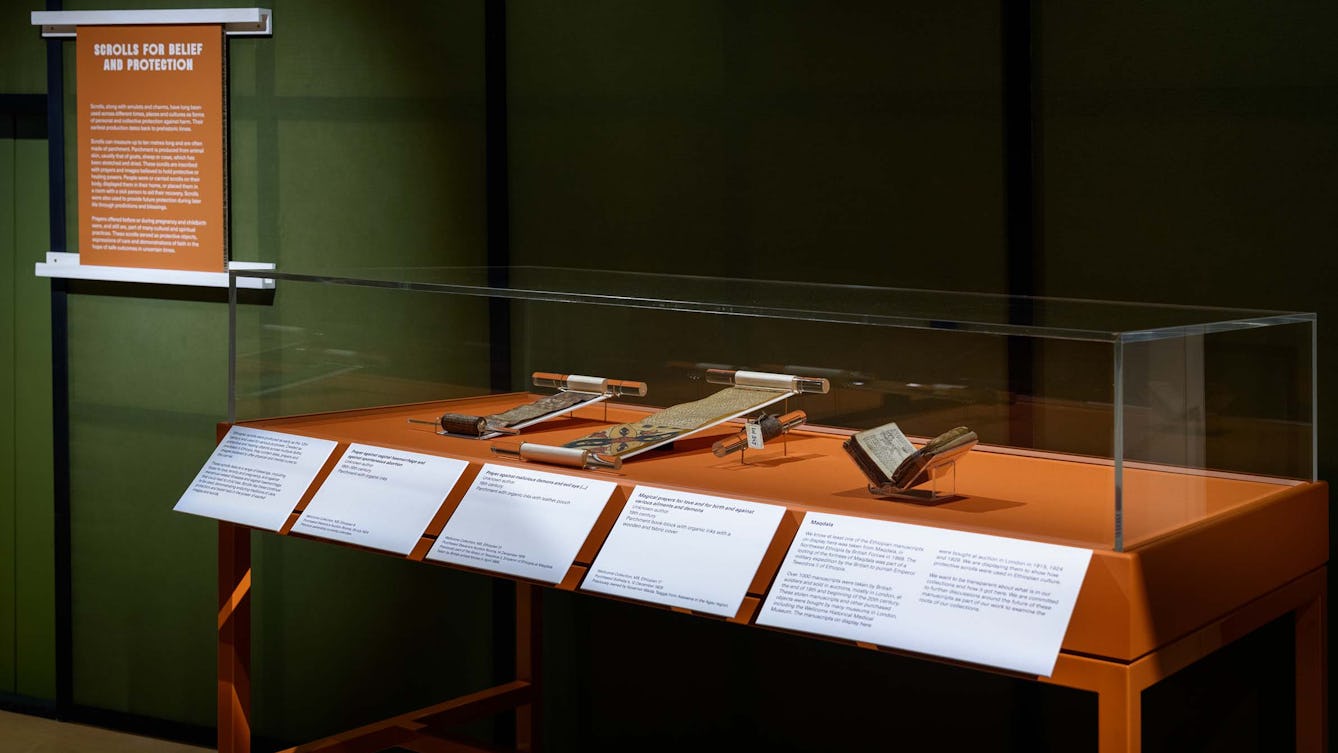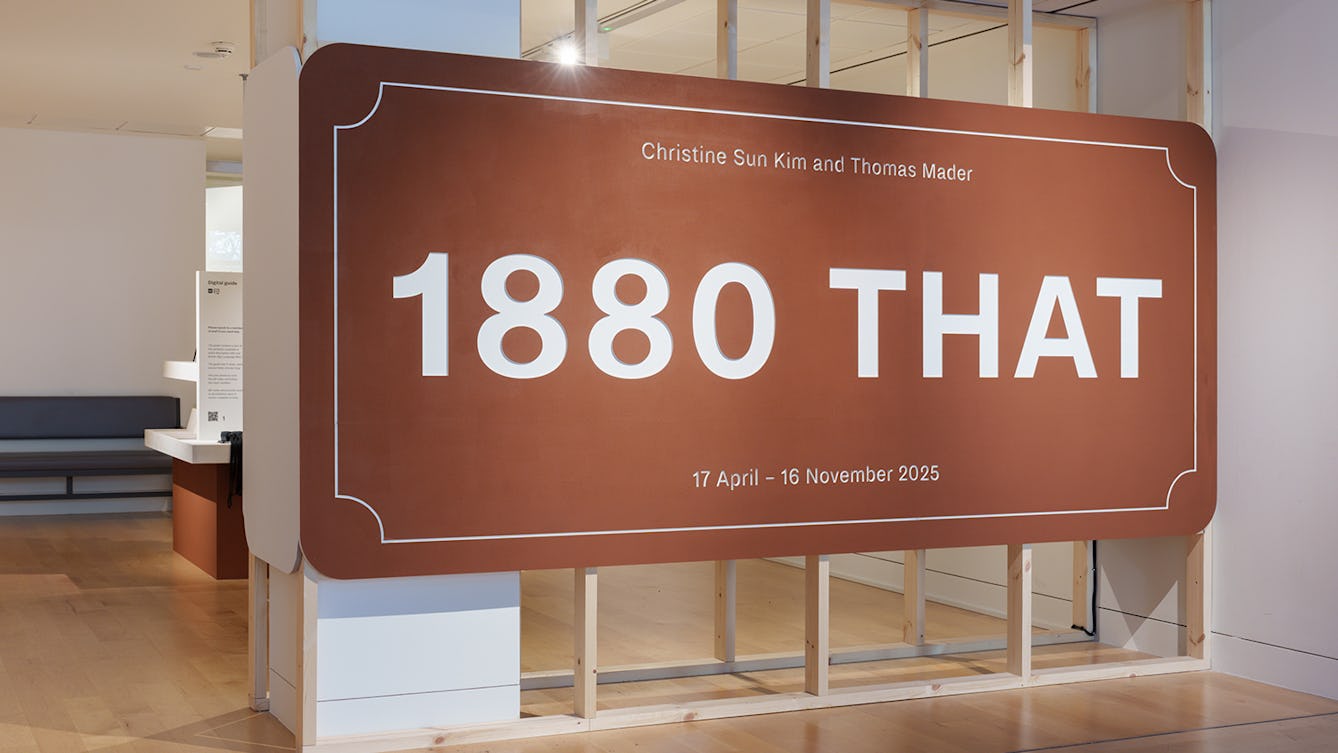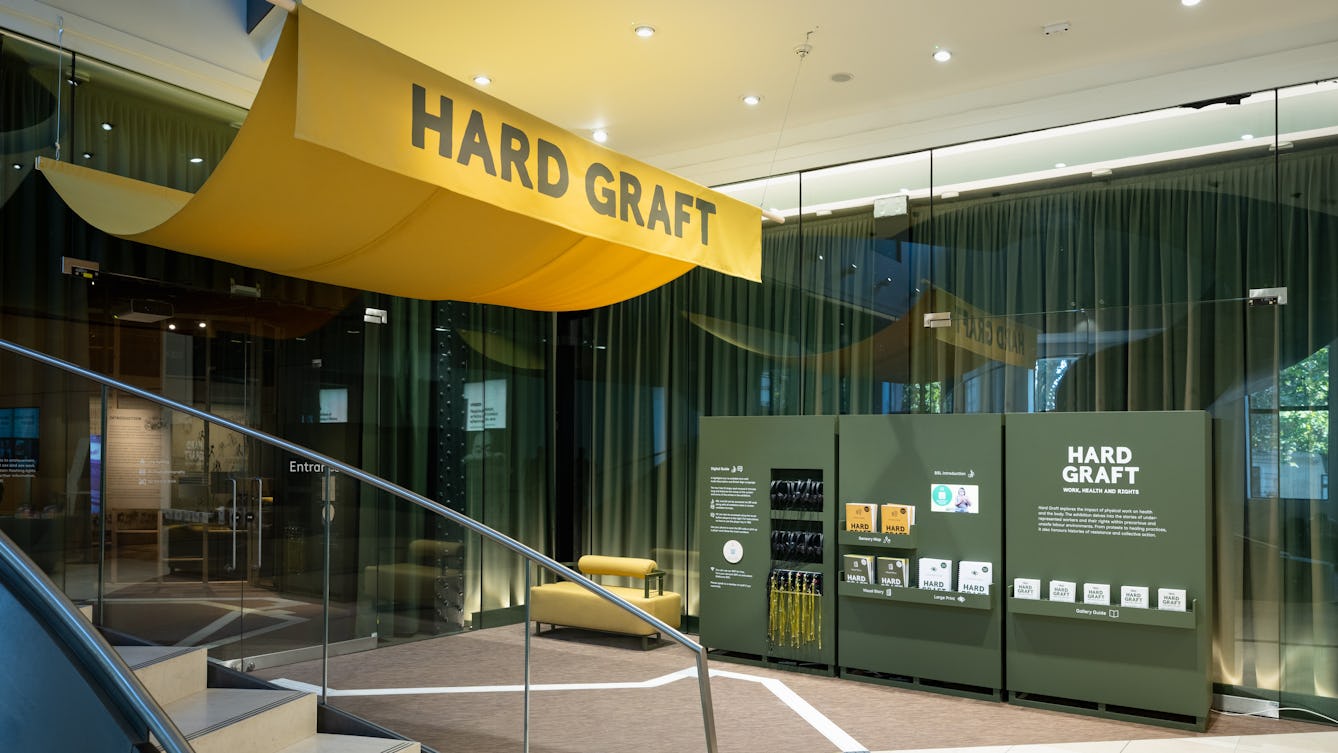Information to help you plan and prepare for your visit to the exhibition.
Video visual story
Exhibition information

This exhibition is called ‘1880 THAT.’
An exhibition is a collection of things to look at and learn about.
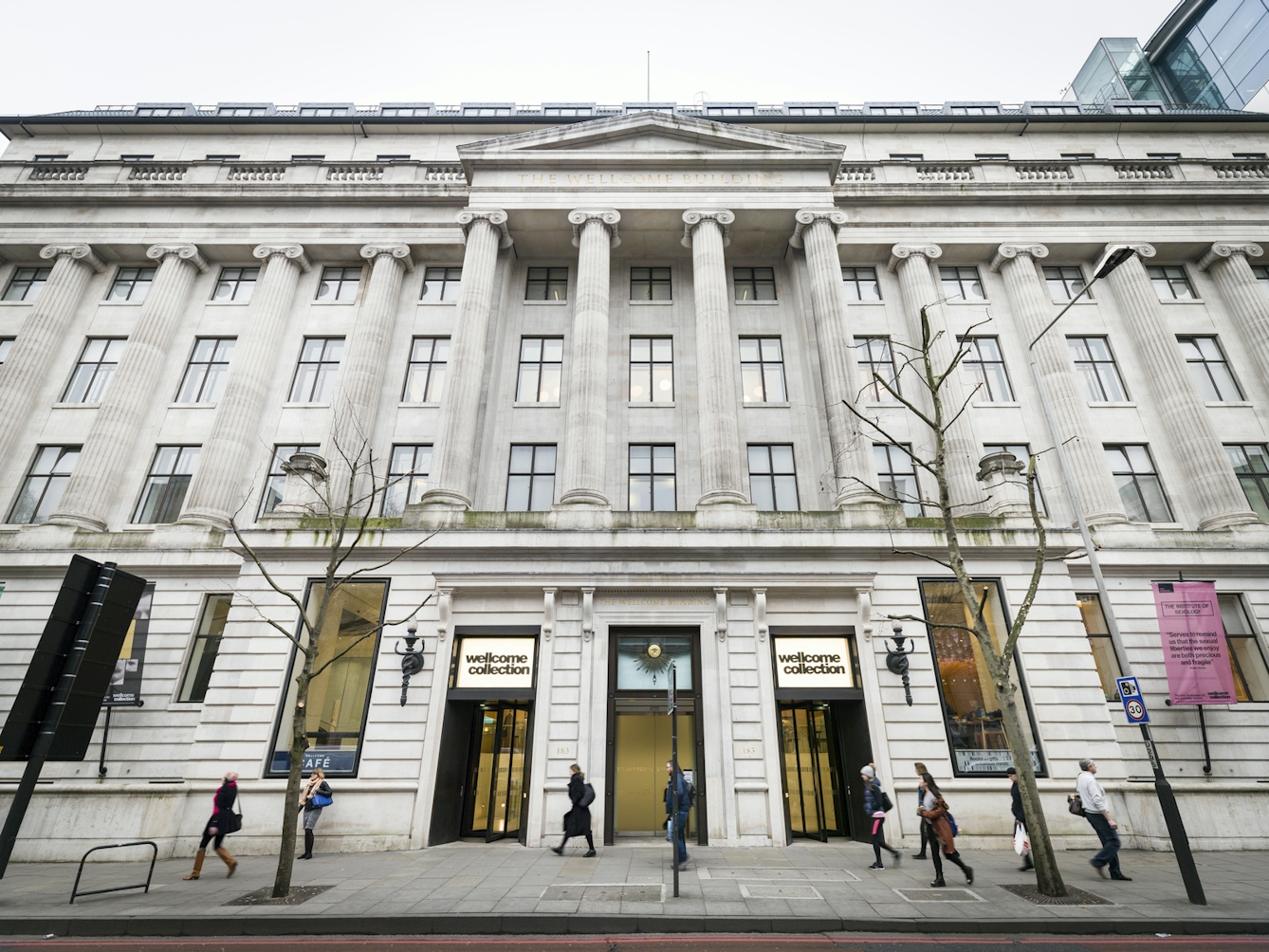
The exhibition is at Wellcome Collection.

The exhibition is in Gallery 2 on level 1 of our building.
Introduction to Wellcome Collection
For more information about:
- opening times
- accessibility
- travel
click on this link: Visiting Wellcome Collection visual story.
Introduction to this exhibition

‘1880 THAT’ is an exhibition by artists Christine Sun Kim and Thomas Mader. It tells stories about:
- Sign language and spoken language. Sign language uses hand shapes and the face to communicate instead of using spoken words.
- The history of education for Deaf people.
- How sign language and spoken languages are different and how they are connected.
- In 1880 there was an important meeting that happened in Italy called the Milan Conference. A conference is a meeting where people talk about important things. Milan is the city in Italy where the conference happened. The conference was about the best way to teach Deaf peple.
164 people who went to the Milan conference could hear. Only one person at the conference was Deaf.
- Most of the people at the conference thought that Oral Education was best for Deaf children. Oral Education means teaching Deaf children to communicate by speaking with their voices like hearing people do. Only a few people at the conference thought that Deaf children should be taught sign language instead.
- After the Milan Conference, teaching sign language was banned in many countries. This meant that children were not allowed to use sign language in schools. This harmed the education of many Deaf people. It also harmed many Deaf people’s working and personal lives. The decision made at the Milan Conference still harms many Deaf people’s lives today.

The word THAT comes from a sign in American Sign Language which means ‘look at that’. THAT is in the exhibition’s name to show how much the Milan Conference in 1880 has affected Deaf people’s lives.
What is in the exhibition

There are different things to look at in the exhibition. These include:
- Drawings
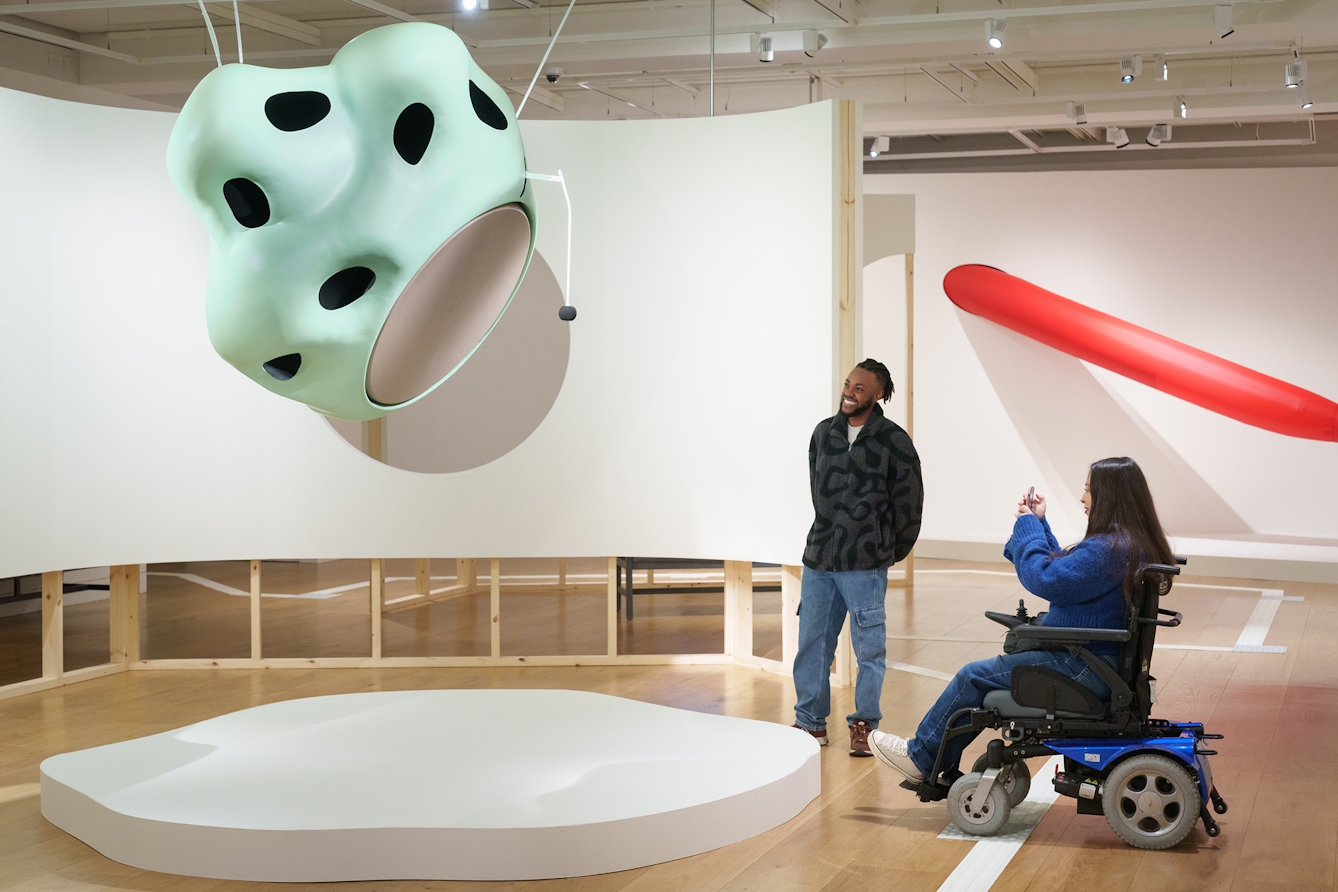
- Sculptures

- Films
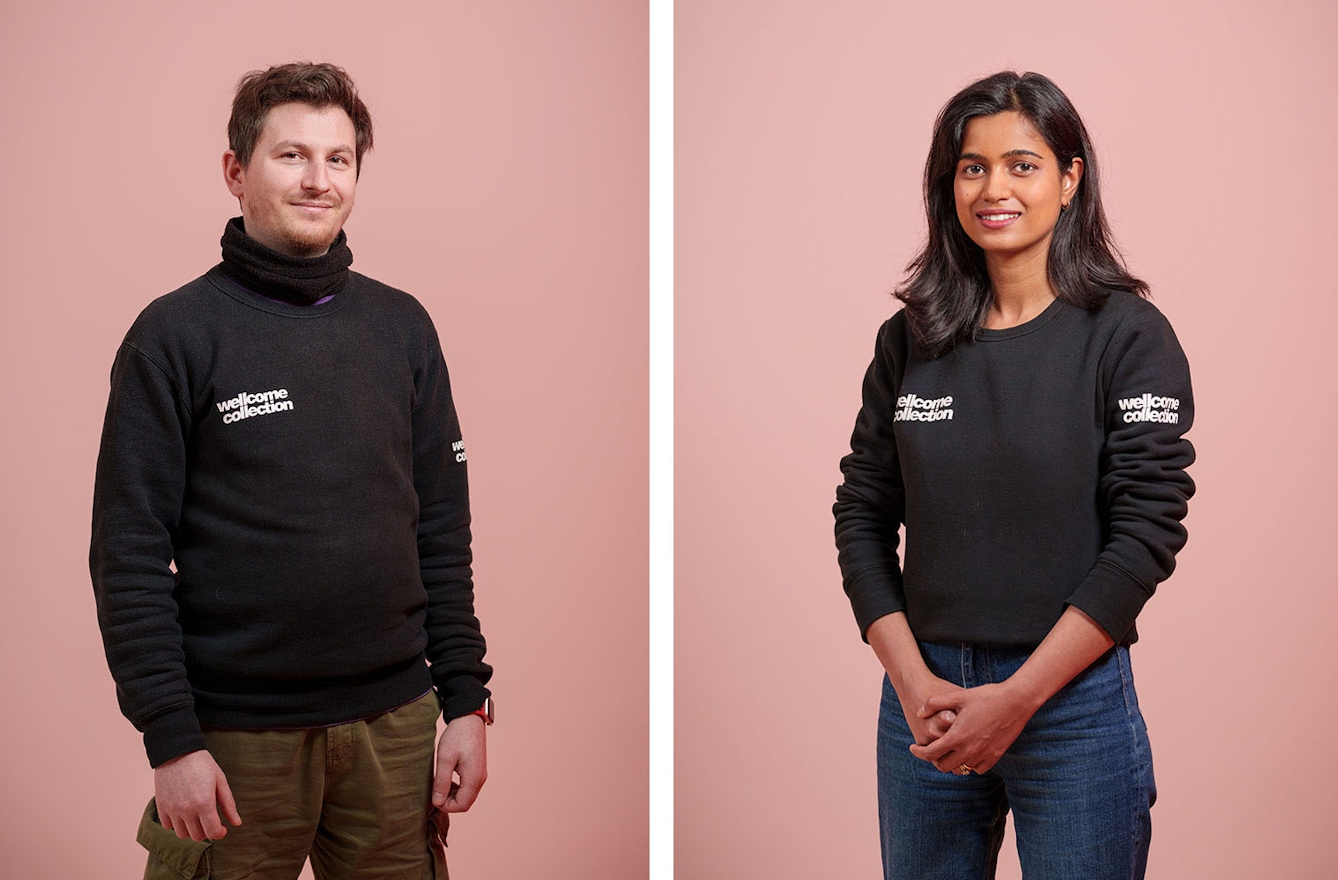
If you need any help, you can speak to a member of our team.
Sensory information
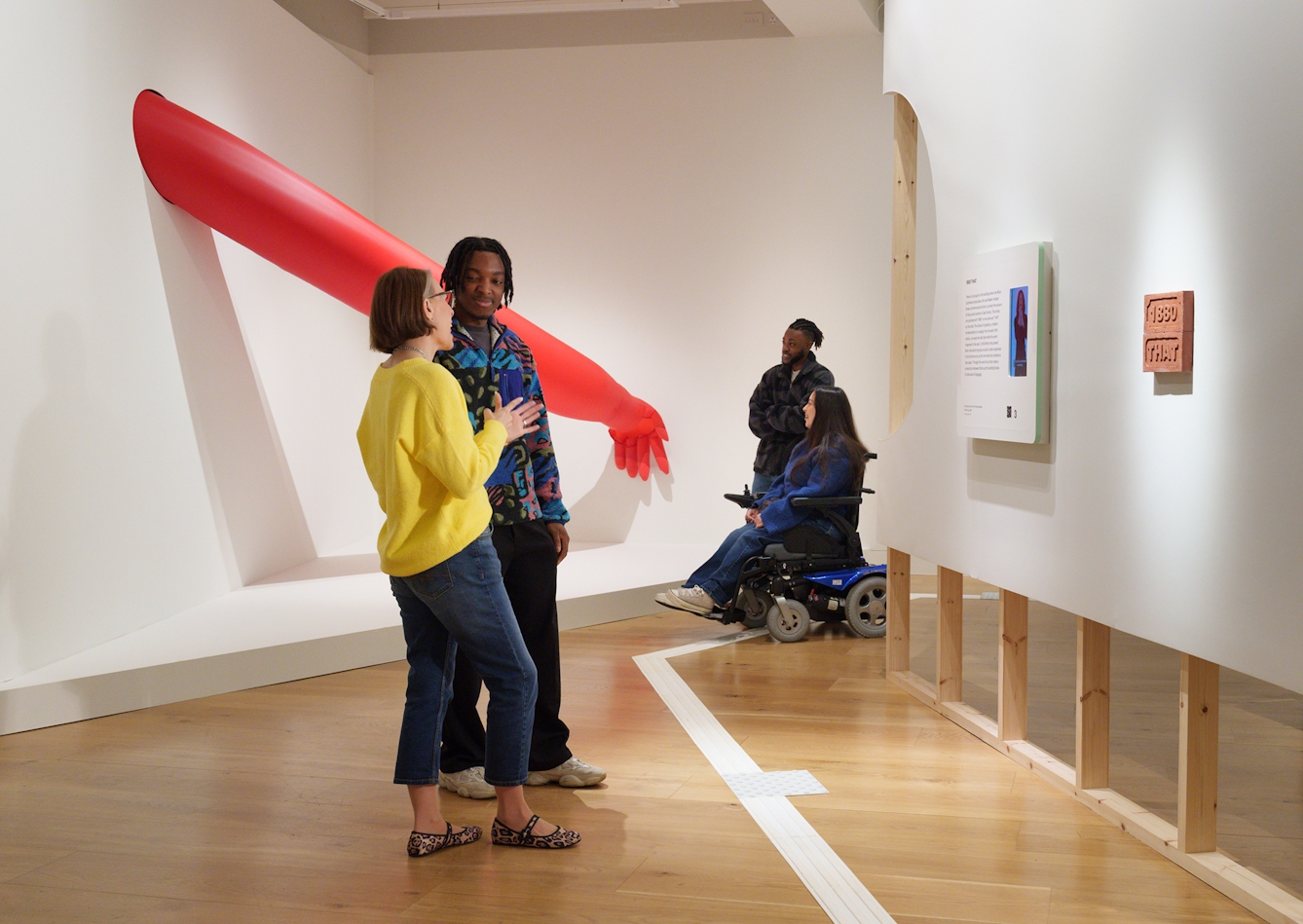
People sometimes speak quietly at an exhibition. But you do not have to speak quietly.

The sculpture is called ‘Look Up My Nose’. Every 10 minutes the drum beat will sound 4 times, pause, then sound again 4 more times. You can feel the sculpture beat if you stand nearby.

They are called ‘Attention’ and they look like two giant red arms.
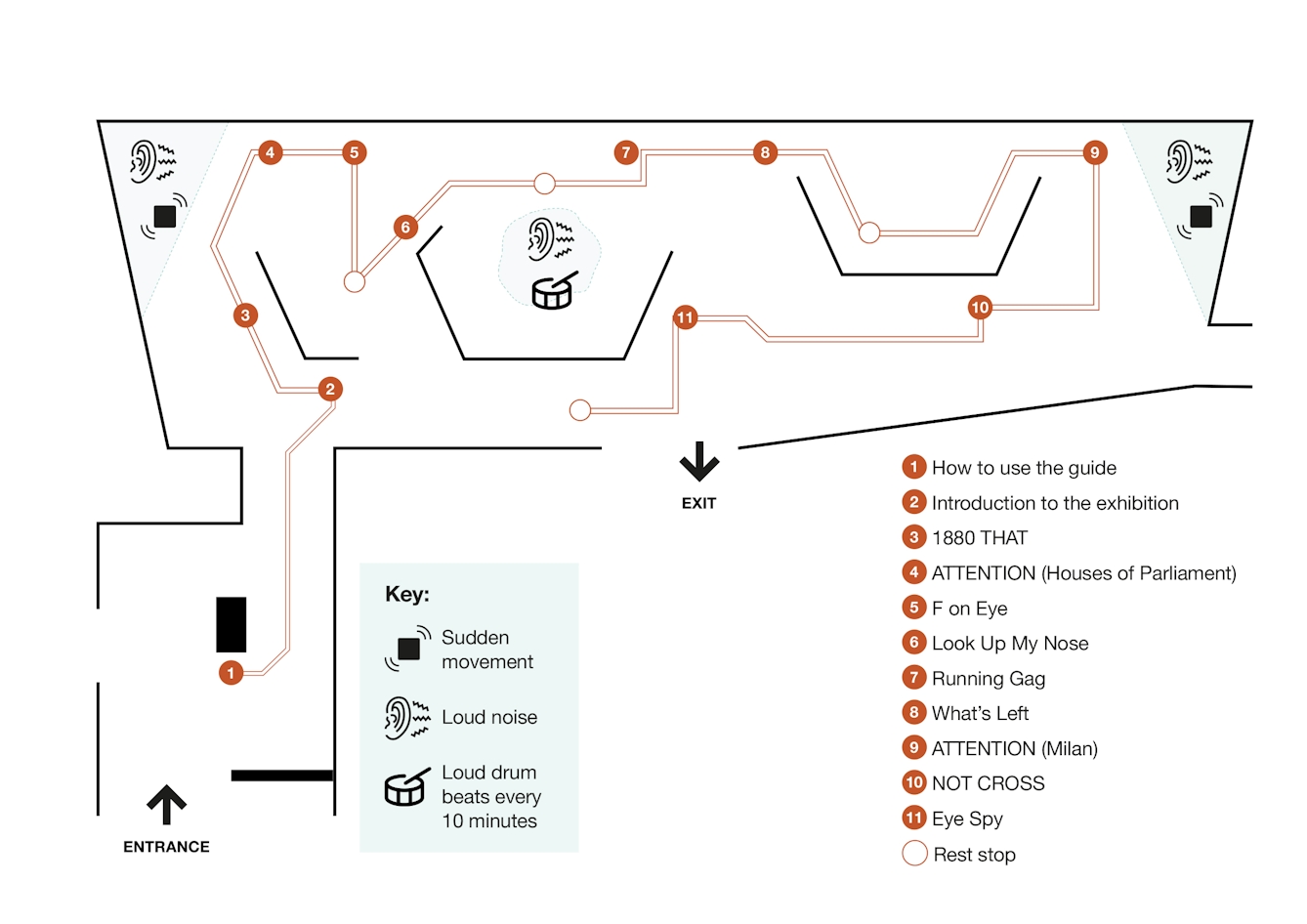
A sensory map of the exhibition. The sensory map shows you where there are loud sounds and sudden movement in the exhibition.
It also shows the locations of all the artworks.
Exhibition artworks

‘1880 THAT’ is a sculpture of a brick.
There is no memorial at the building where the Milan Conference happened in 1880. A memorial helps us to remember something very important. So the artists are using bricks to remind people of this very important event.
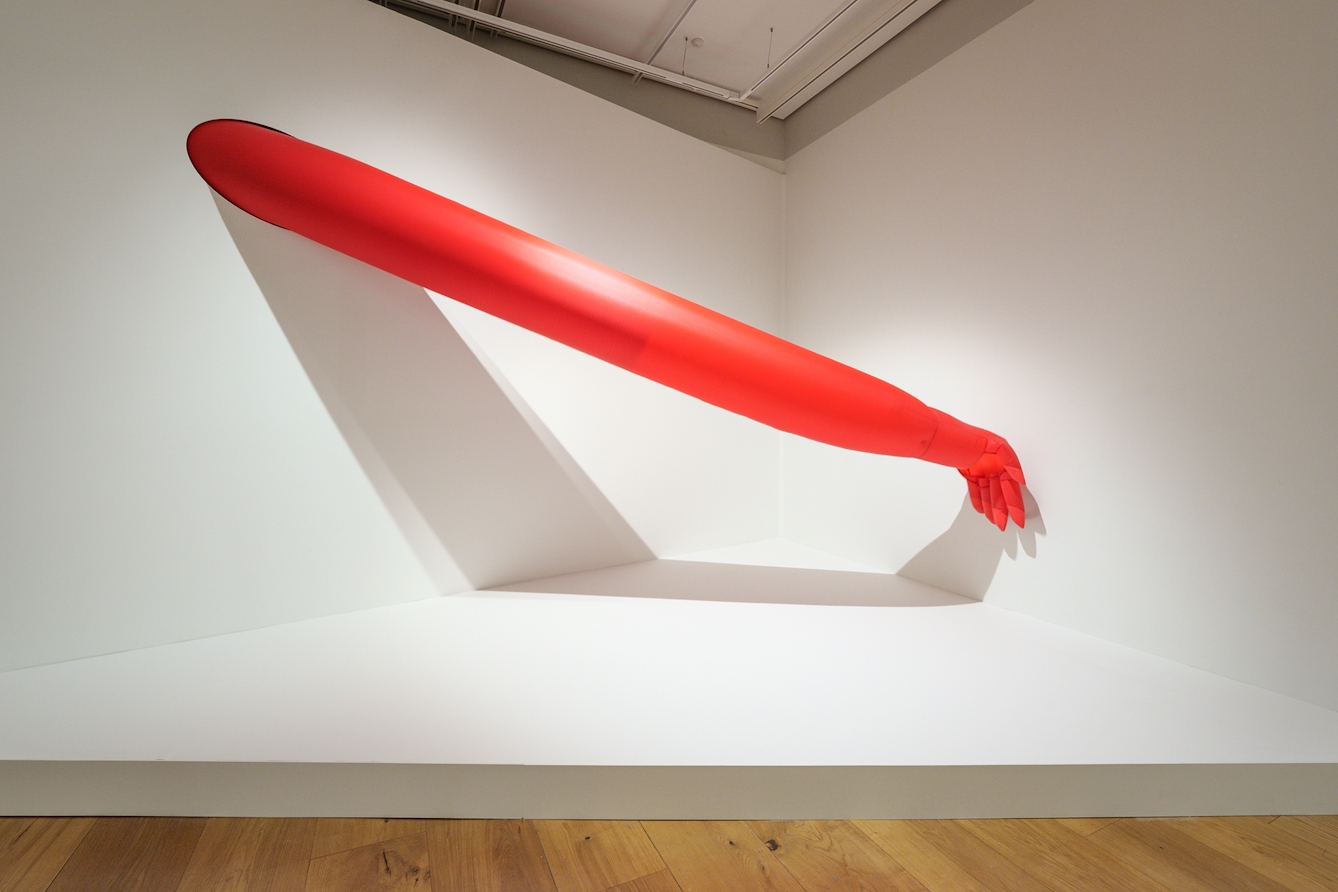
‘ATTENTION’ is a sculpture of an inflatable red arm with a waving hand. Inflatable means air from a fan moves through the sculpture, making it wave.
Deaf people who use American Sign Language wave their hand or point to get people’s attention. The sculpture’s hand is waving towards the Houses of Parliament, where British politicians work.
Politicians make decisions and laws that affect people’s lives. The sculpture shows how difficult it is for Deaf people to get the attention of politicians, and to be treated fairly by them.
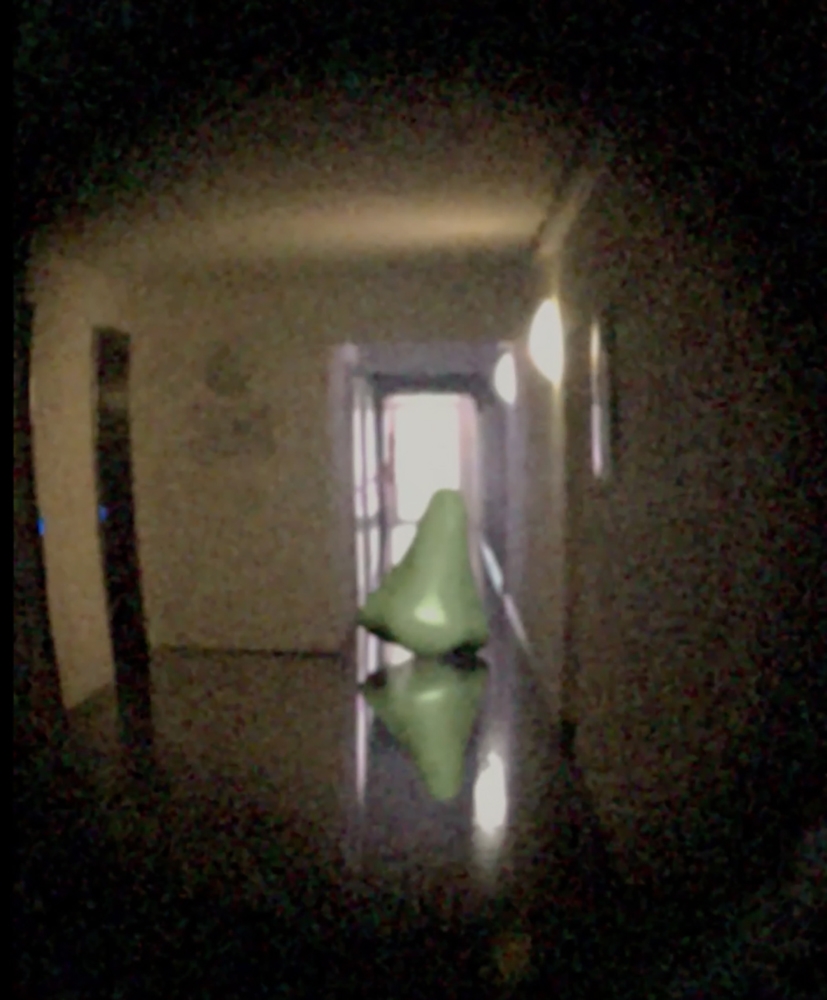
‘F on Eye’ is a short animated film. An animated film is created on a computer.
The film shows an apartment door with a peephole. A peephole is a small hole you can look through to see who is outside your door.
In the film, we look through a peephole and see a nose. The nose is a symbol. A symbol is an object that is used to represent something else.
In this film, the nose is a symbol for the people at the 1880 Milan Conference who wanted to ban sign language.
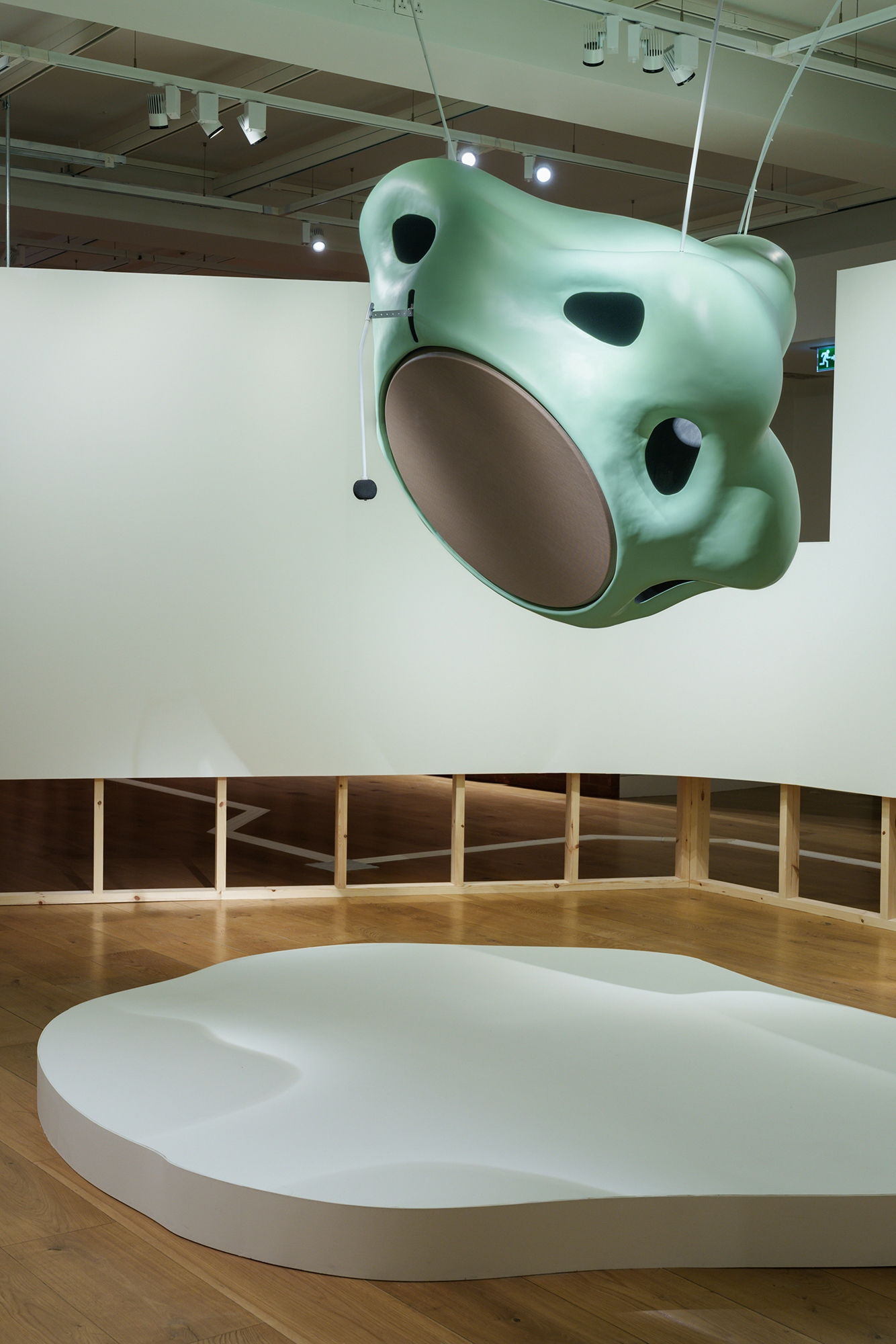
‘Look Up My Nose’ is a sculpture. It is shaped like the noses of people at the Milan Conference who wanted to ban sign language. One was Alexander Graham Bell, another was his father, Melville Bell.
Alexander Graham Bell is known for being an inventor. An inventor designs new things. Alexander Graham Bell was one of the inventors of the telephone.
The artists use the nose as a symbol to show that Alexander Graham Bell and his father ‘looked down their nose’ at sign language. To ‘look down your nose’ at something means you think that thing is not much good.
Alexander Graham Bell and his father thought that sign language was not worth learning and that speaking with the voice was better.
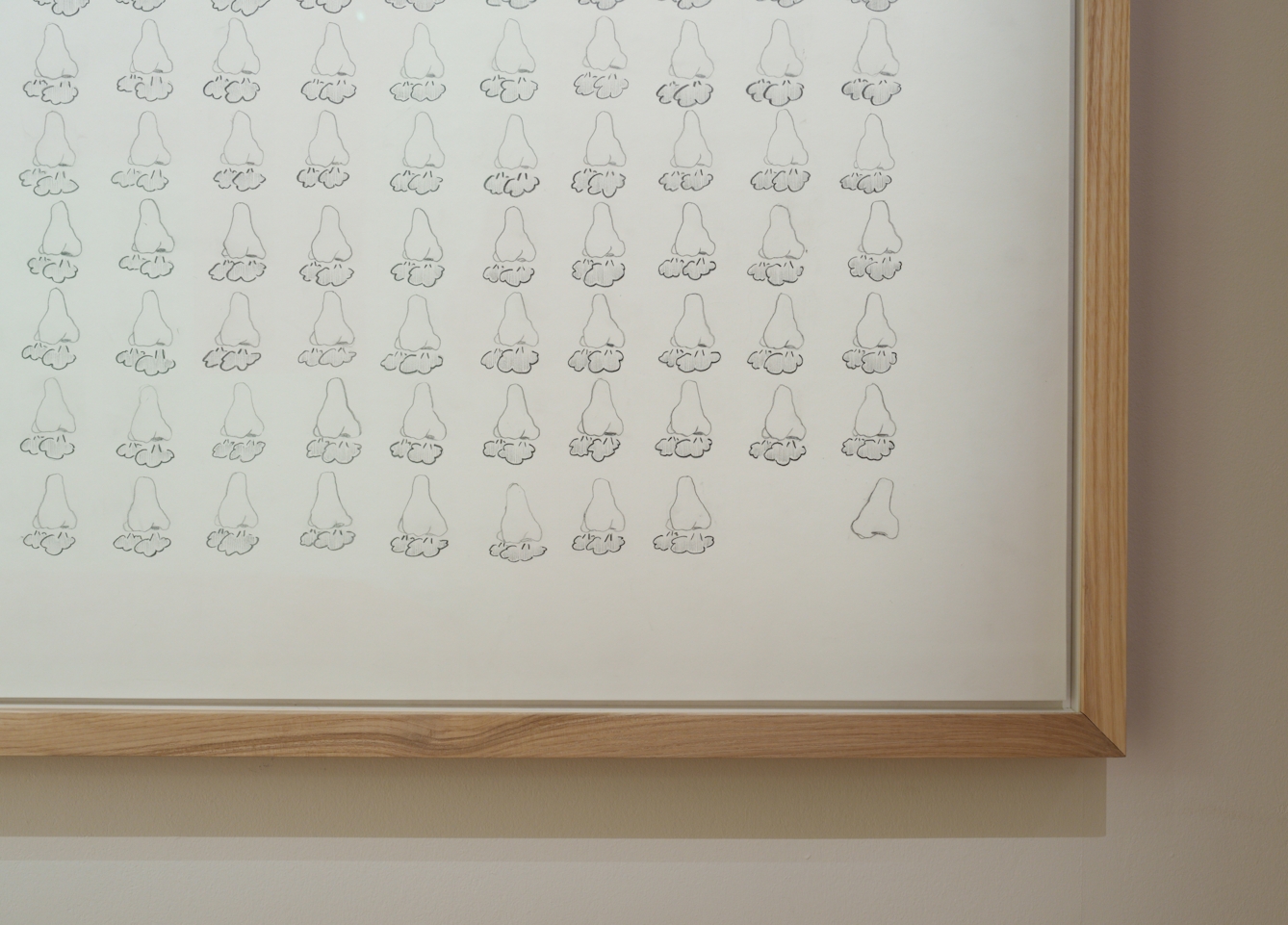
'Running Gag' is a drawing of 164 noses. The noses are symbols for all the people who went to the Milan Conference in 1880 and the people that afterwards tried to ban sign language.
163 of them were hearing people. Their noses are shown blowing out air. This is a symbol that they looked down their noses at sign language.
There is one nose at the bottom right corner of the drawing that is not blowing out air. That nose belongs to the one Deaf person who was at the Conference. That person did not look down their nose at sign language.
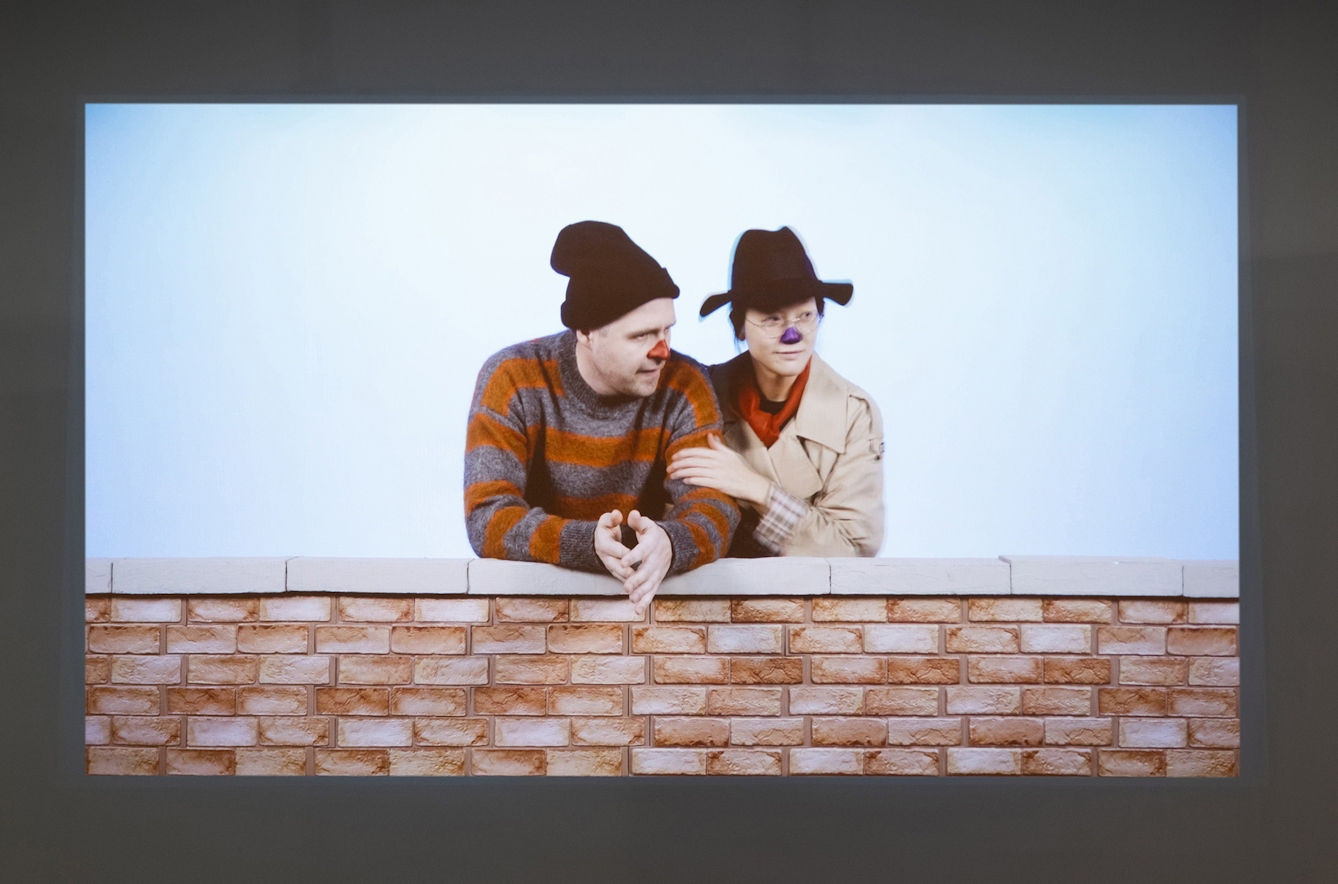
‘What’s Left’ is a film about two characters called Lefty the Salesman and Ernie from the American TV show ‘Sesame Street’. In 'Sesame Street', Lefty is always trying to sell strange things to Ernie secretly, against the rules. Sometimes he tries to sell letters of the alphabet.
It is a strange idea that letters or languages can be against the rules.
But after the Milan Conference in 1880, using sign language was against the rules in many places.

‘ATTENTION’ is a sculpture of an inflatable red arm with a pointing hand. Deaf people who use American Sign Language wave their hand or point to get people’s attention. The sculpture’s hand is pointing towards Milan in Italy. It brings our attention to the Milan Conference, and how much it affected the lives of Deaf people.
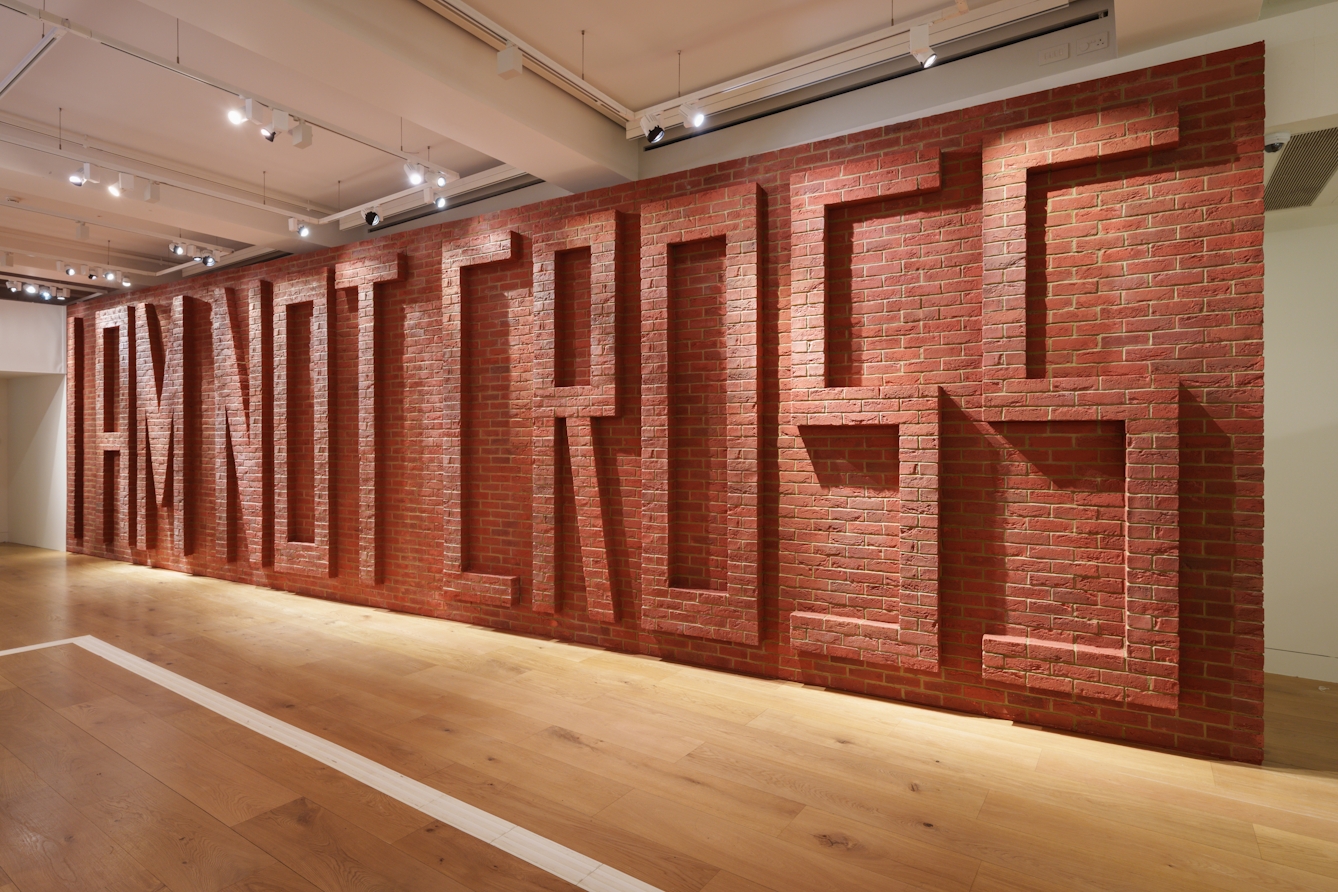
‘NOT CROSS’ is a sculpture. It is about how sometimes people hide their true feelings.
Cross means angry.
In this example, a person can use words to say "I am not cross." But really they do feel cross. And their face shows their true feeling of being cross.
This can cause misunderstandings. A misunderstanding is when a person is confused by what someone else says to them.
Misunderstandings like this can happen in spoken and signed languages. This can make it especially hard for hearing people who are learning sign language.
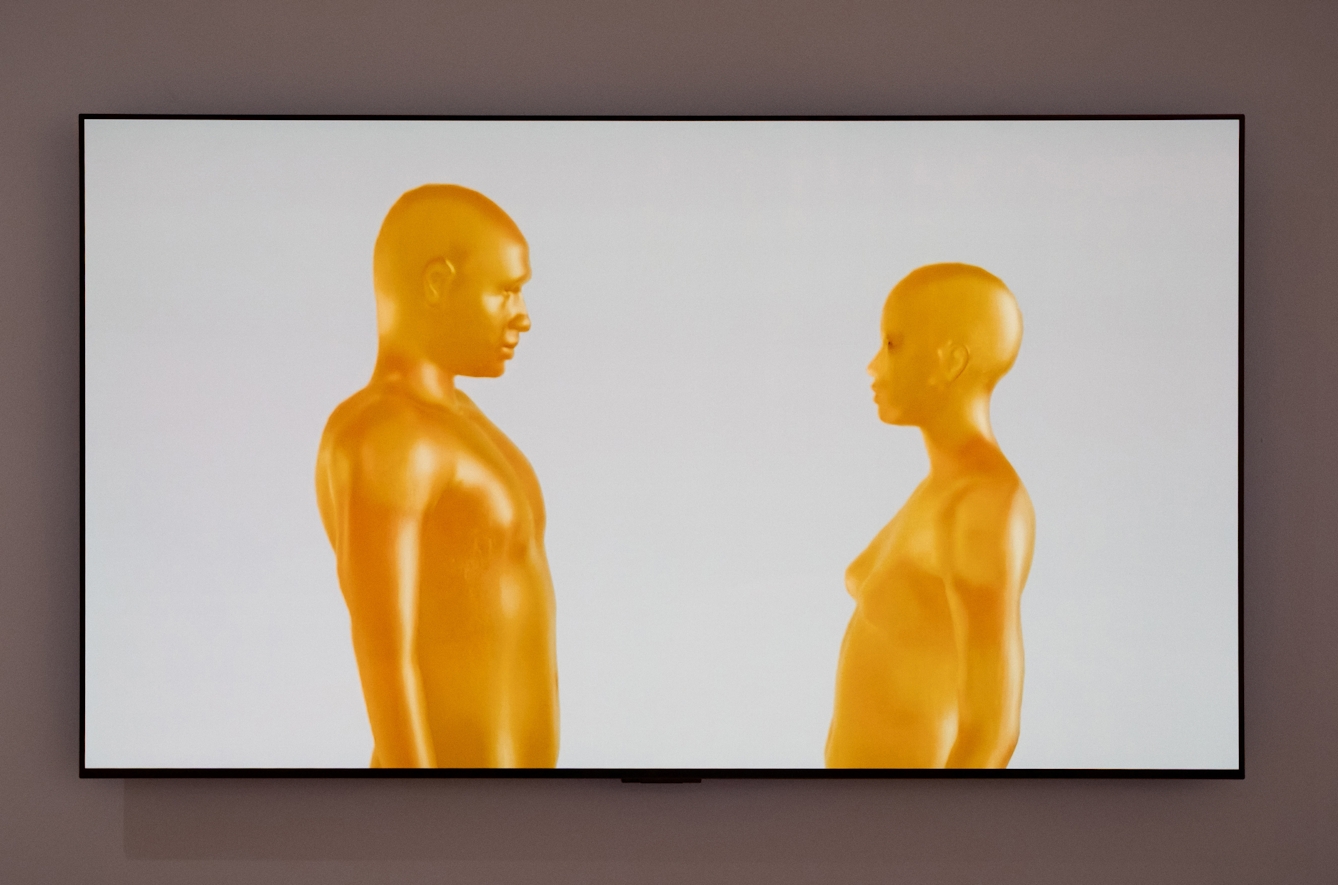
‘Eye Spy’ is an animated film, which shows two see-through people passing a set of eyeballs back and forwards to each other.
There is a sign in American Sign Language which looks like someone is passing their eyeballs to another person. The sign means "I wish you could see the world through my eyes".
The hearing people at the Milan Conference did not see the world through Deaf people’s eyes. So they did not understand how important sign language is.
Accessibility in the exhibition
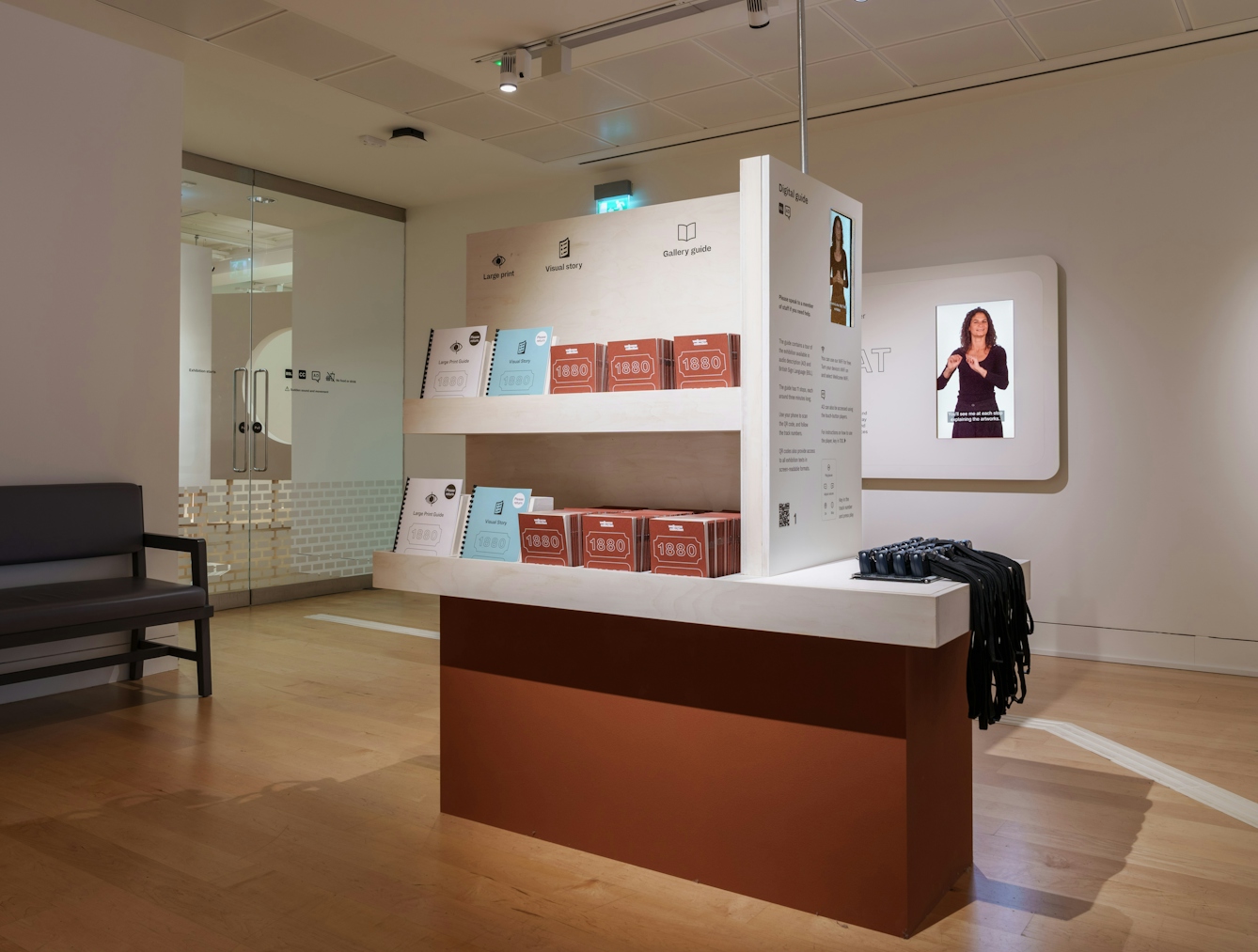
You can find accessible guides at the start of the exhibition.
There are also screens inside the exhibition showing British Sign Language videos for people who use BSL.
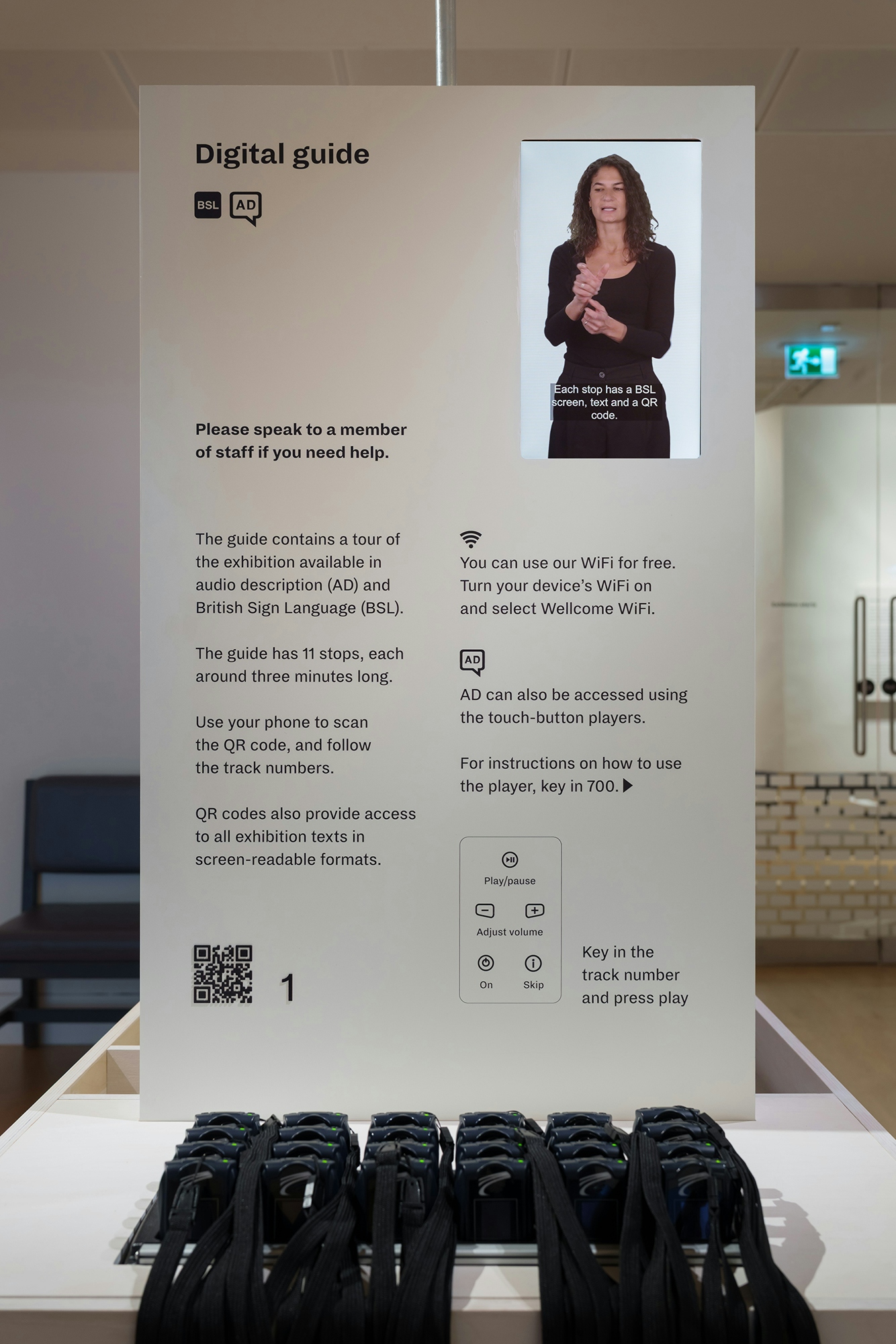
There are two digital guides that you can use with QR codes to follow a highlights tour around the exhibition:

There are 11 stops in the digital guides.

There is a white line on the exhibition floor. Follow the white line to get to each stop. Each stop is marked with a grey square.
The white line and grey squares have a pattern that you can feel with your feet.
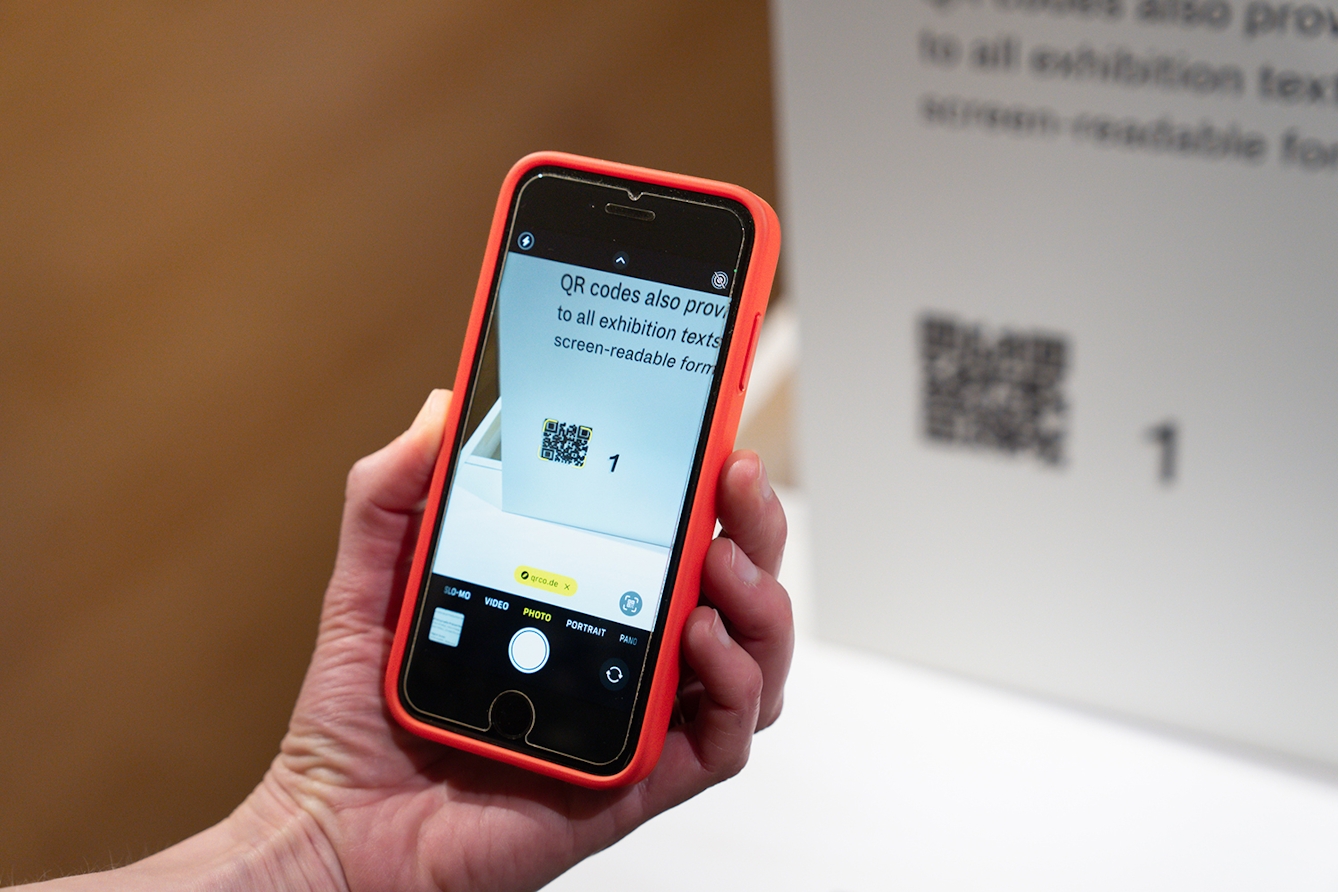
You can get all the information that is on the exhibition labels and panels by scanning the QR code with your phone. The information can be read by a screen reader.
To scan a QR code:
- Open the camera on your phone
- Point it at the QR code
- Click on the link for "read captions and transcripts".
If you do not know how to scan a QR code, we can help you.

If you need help with anything, you can ask a member of gallery staff.
Accessible tours
Relaxed opening

If you need additional support to enjoy this exhibition, join us for a relaxed opening. At a relaxed opening there will be:
- fewer visitors
- extra gallery staff to help you.
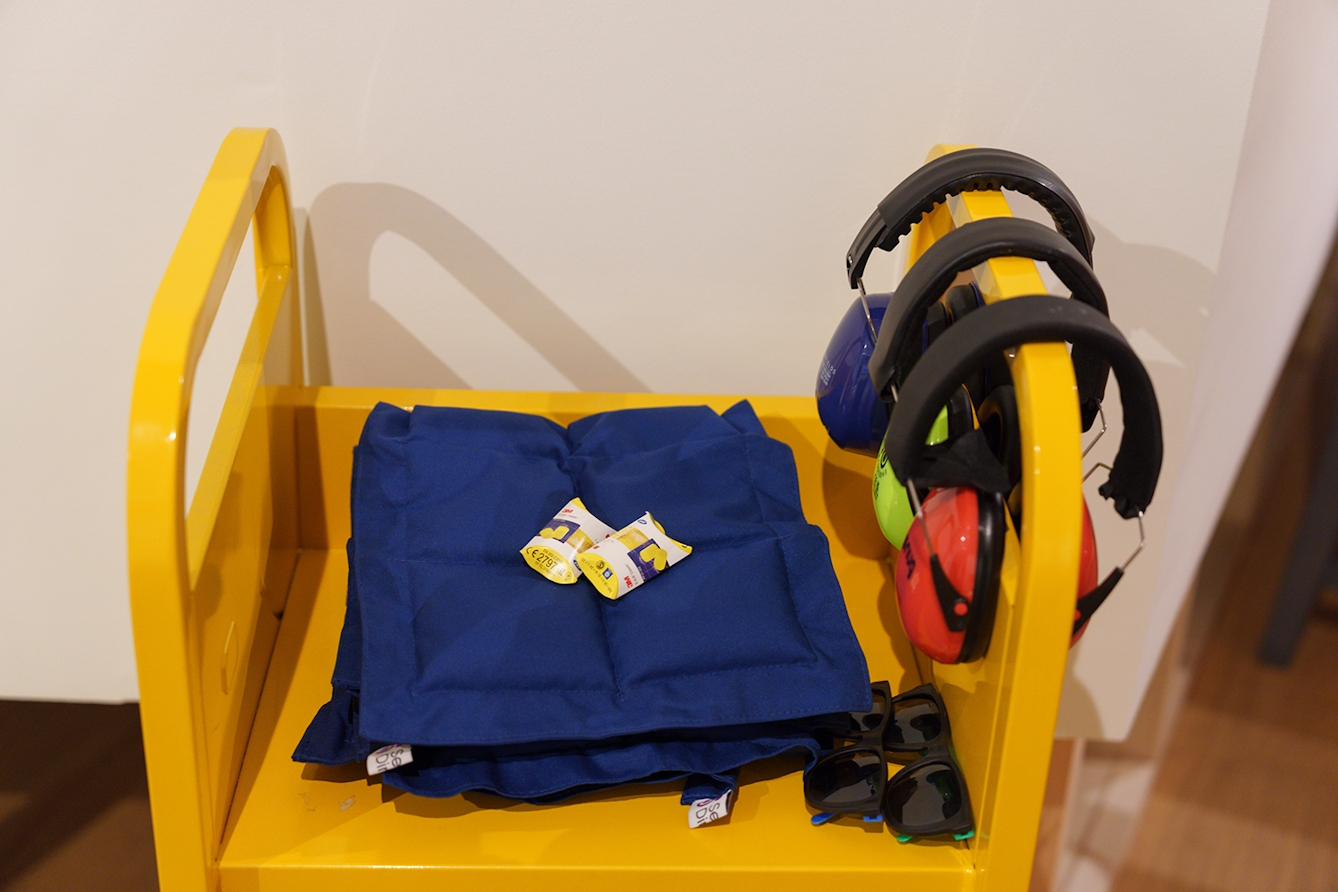
At a relaxed opening you can use our:
- cushions
- ear defenders
- tinted glasses
- tinted visors
- weighted lap pads
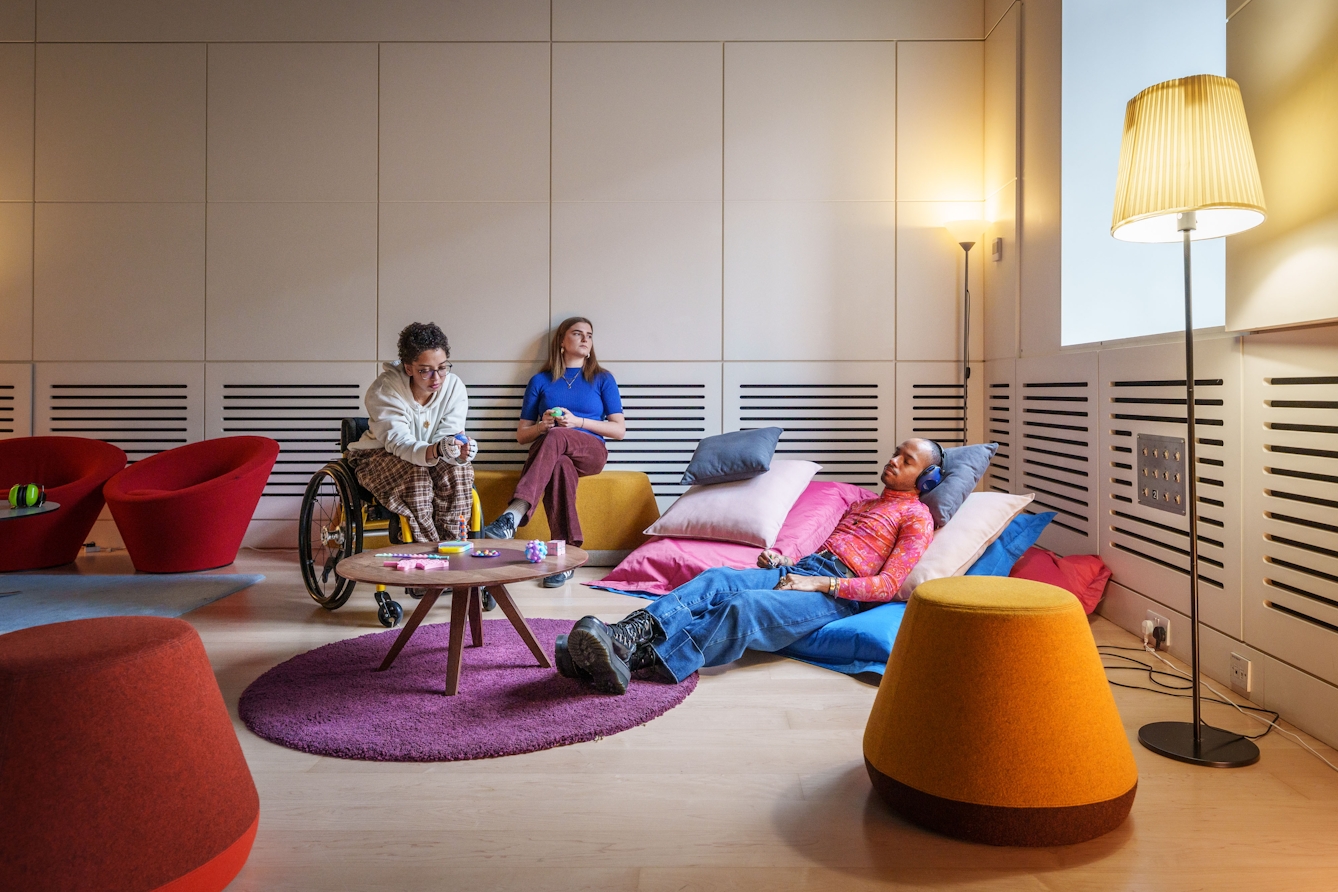
At a relaxed opening thre will be a chill-out room. The chill-out room has:
- low lighting
- soft seats
- sensory and fidget toys












